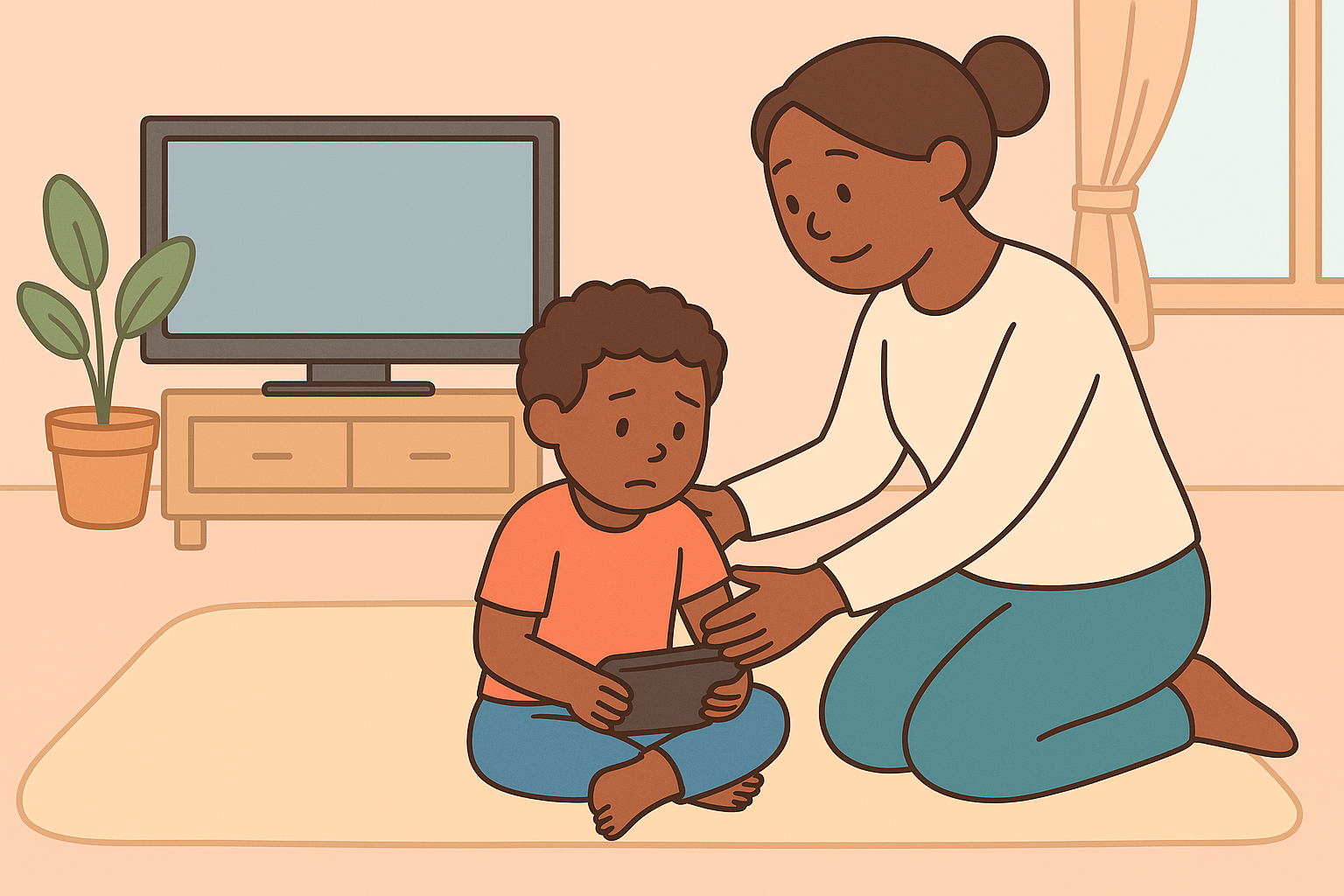Helping Kids Transition Away from Screens Peacefully
Helping Kids Transition Away from Screens Peacefully
If “five more minutes” has become the soundtrack of your home, you’re not alone. For many families, screen time isn’t the problem — it’s the transition away that causes meltdowns.
But peaceful transitions are possible. With a few small shifts in rhythm, language, and empathy, you can help your child log off without the tears (and without losing your sanity).
Why Screen Transitions Feel So Hard
Screens are designed to capture attention — bright colors, dopamine triggers, instant feedback. When it’s time to turn them off, the brain doesn’t simply “switch modes.”
1. Dopamine Drop
The rush of digital engagement is suddenly gone, which can cause irritability or frustration. Kids aren’t being “bad” — they’re adjusting to a chemical shift.
2. Abrupt Change
Imagine being deep in a favorite book and someone slams it shut — that’s what kids feel when devices power off without warning.
💡 Fuzzigram tip: The key isn’t more control — it’s more predictability.
See Tech Boundaries That Stick: Setting Limits Without Meltdowns.
Step 1: Build Predictable Screen Routines
Kids thrive on knowing what’s next. Set clear rules about when and where screen time happens — and when it ends.
Example:
“You can watch one show after snack time. When the show ends, we’ll play outside.”
💡 Use consistent signals (a timer, visual schedule, or verbal countdown) to reduce surprises.
Step 2: Use Gentle Transition Warnings
Give your child a runway to land.
Try:
“Five minutes left, then we’ll start dinner.”
“After this level, it’s time for your bath.”
“When the song ends, we’ll turn it off together.”
✨ The language of partnership works better than commands.
See Helping Kids Become Independent in Their Morning Routine.
Step 3: Offer an Inviting Next Step
Don’t just end screen time — redirect it.
If you say “turn it off” without offering what’s next, it feels like loss.
Instead, say:
“Let’s save your game and start building with blocks.”
“We can act out your favorite video character in real life!”
This bridges digital and physical play.
Step 4: Use Transitional Anchors
Create a calming activity that always follows screen time.
For example:
Drawing or journaling what they watched
Going outside for five minutes
Helping with a simple chore or snack prep
Doing a quick breathing or stretching exercise
💡 Fuzzigram tip: Anchors work best when they’re consistent — the body learns to expect calm after stimulation.
See Mindful Family Moments: Bringing Calm into Everyday Chaos.
Step 5: Model Calm Detachment
If you react with frustration, kids learn that transitions equal tension. If you stay calm, they mirror that energy.
“I know it’s hard to stop — you were having fun. Let’s take a deep breath together.”
See Digital Role Modeling: How Your Own Habits Shape Theirs.
Step 6: Reflect and Celebrate Success
After each smooth transition, celebrate it.
“You turned it off right when the timer rang — that was awesome self-control!”
Positive reinforcement builds internal motivation — far more effective than threats or bribes.
When transitions are predictable, playful, and partnered — meltdowns lose their power. You’re not just teaching your child to pause a screen — you’re teaching emotional regulation, patience, and trust.
Because the real magic happens not in the screen itself — but in how you guide your child back into the real world.
This content is for educational purposes and is not a substitute for professional medical or psychological advice.
Popular Parenting Articles


